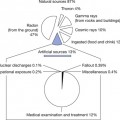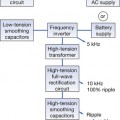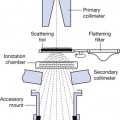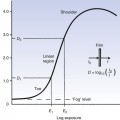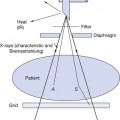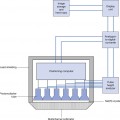Chapter 4 Units of measurement
4.1 Aim
This chapter introduces the reader to the main units that are used in measurement in radiographic science.
4.2 Units of measurement
Science has three fundamental tools that are used in its attempts to understand the external world:
4.3 SI base units
There are a plethora of units of measurement used throughout the world. The International System of Units (SI) attempts to replace this with seven standard units. These standards are termed SI units (see Table 4.1) and represent the fundamental measurements that we might wish to make of a body:
• What is its size? (unit of length–metre)
• How massive is it? (unit of mass–kilogram)
• How bright is it? (unit of luminous intensity–candela)
• How much electrical current flows through it? (unit of electrical current–ampere)
• How many elementary particles does it contain? (unit of amount of substance–mole)
• How hot is it? (unit of temperature–Kelvin)
• How do all the quantities vary with time? (unit of time–second)
| QUANTITY | UNIT OF MEASUREMENT | SYMBOL |
|---|---|---|
| Length | Metre | m |
| Mass | Kilogram | kg |
| Luminous intensity | Candela | cd |
| Electric current | Ampere | A |
| Amount of a substance | Mole | mol |
| Temperature | Kelvin | K |
| Time | Second | s |
The very precise definitions of the units are not required for the rest of this text, but if you wish to see them, they are given in Appendix C.
These seven SI base units may be combined to give derived units, as described in the next section.
4.3.1 Derived SI units
A number of derived SI units can be formed by the combination of the seven base units. Some of these are sufficiently important to be given their own names and they are listed in Table 4.2 and discussed in the rest of this chapter.
Table 4.2 Derived SI units and their definitions
| Quantity | DEFINITION | SI UNIT | SCALAR/VECTOR |
|---|---|---|---|
| Speed | Distance travelled in unit time | Metre per second (m.s−1) | Scalar |
| Velocity | Distance travelled in unit time in a given direction | Metre per second (m.s−1) | Vector |
| Acceleration | Change of velocity in unit time | Metre per second (m.s−2) | Vector |
| Force | The application of unit force to unit mass produces unit acceleration | Newton (N) (kg.m.s−2) | Vector |
| Pressure | Force applied per unit area | Pascal (Pa) (N.m−2) | Vector |
| Weight | Force acting on a body due to gravity | Newton (N) (kg.m.s−2) | Scalar |
| Work | Product of the force acting on a body times the distance the body moves | Joule (J) (n.m) | Scalar |
| Energy | Kinetic energy: work which can be done by a system because of its velocity | Joule (J) | Scalar |
| Potential energy: work which can be performed because of the position or state of a system | Joule (J) | ||
| Power | Rate of doing work | Watt (W) (J.s−1) | Scalar |
| Momentum | Product of mass and the velocity of the body | (kg.m.s−1) | Vector |
